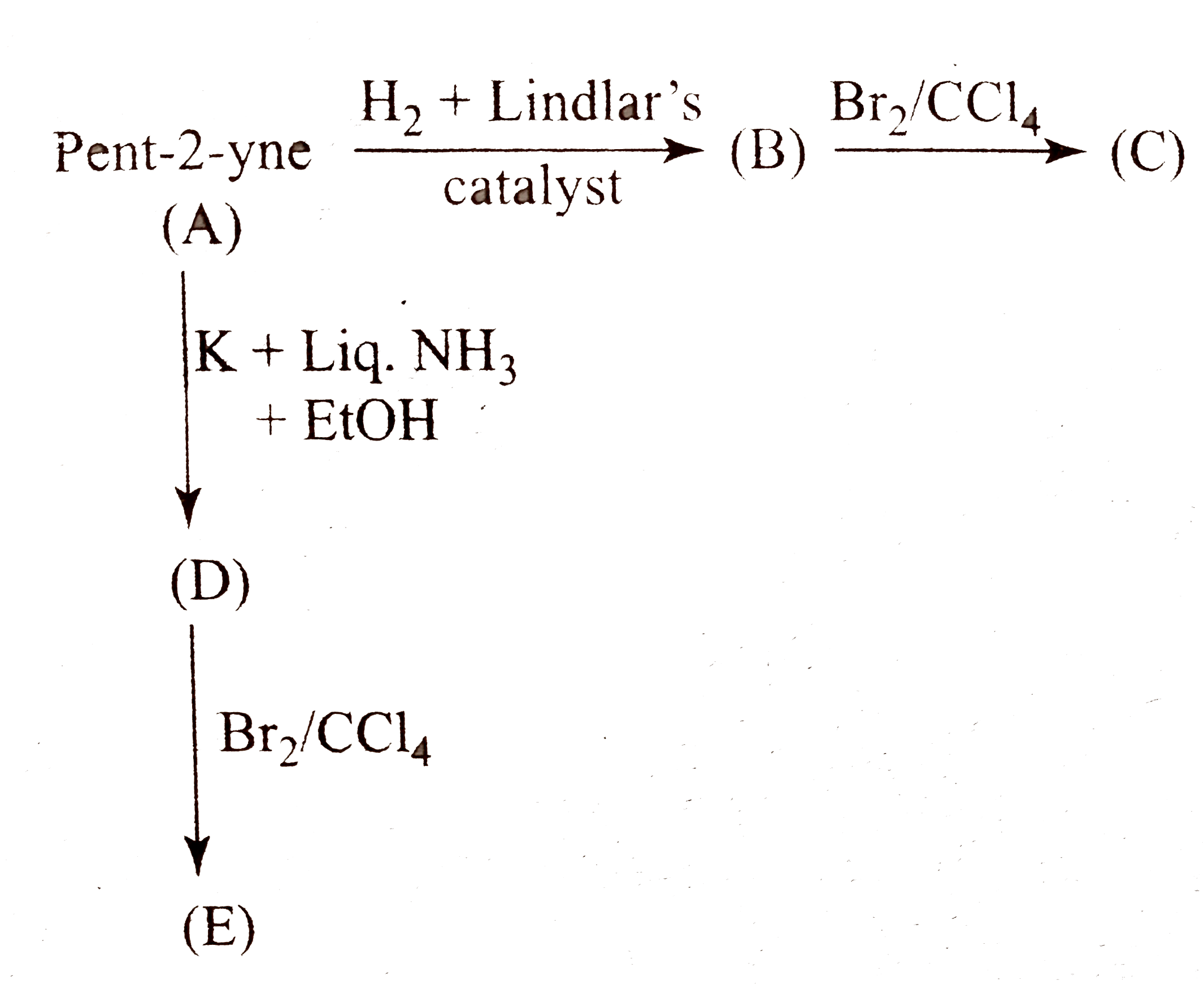
The formation of (C) and (E) takes place, respectivley, when :
A
The formation of both takes place by syn − addition of Br2.
B
The formation of both takes place by anti − addition of Br2
C
The formation of (C) takes place by anti − and (E) by syn − addition of Br.
D
The formation of (C) takes place by syn − and (E) by anti − addition of Br2
Video Solution
Text Solution
The correct Answer is:b.
|
Answer
Step by step video, text & image solution for The formation of (C) and (E) takes place, respectivley, when : by Chemistry experts to help you in doubts & scoring excellent marks in Class 11 exams.
Updated on:21/07/2023Topper's Solved these Questions
- ALKENES AND ALKADIENESBOOK - CENGAGE CHEMISTRYCHAPTER - ALKENES AND ALKADIENESEXERCISE - Multiple Correct Answer Type
41 Videos
- ALKENES AND ALKADIENESBOOK - CENGAGE CHEMISTRYCHAPTER - ALKENES AND ALKADIENESEXERCISE - Single Correct Answer Type
62 Videos
- ALKENES AND ALKADIENESBOOK - CENGAGE CHEMISTRYCHAPTER - ALKENES AND ALKADIENESEXERCISE - EXERCISES
29 Videos
- ALKANES AND CYCLOALKANESBOOK - CENGAGE CHEMISTRYCHAPTER - ALKANES AND CYCLOALKANESEXERCISE - Archives
13 Videos
- ALKYNESBOOK - CENGAGE CHEMISTRYCHAPTER - ALKYNESEXERCISE - Exercises (Archives - Analytical and Desriptive Type)
4 Videos
Similar Questions
Knowledge Check

The formation of (B) and (D) takes place, respectively, when :AThe formation of (B) occurs by anti− and (D) by syn− addition of H2.BThe formation of (B) occurs by syn− and (D) by anti − addition of H2.CThe formation of both takes place by syn − addition of H2.DThe formation of both takes place by anti − addition of H2.Formation of organic matter takes place by
AChemical weatheringBSoil micro-organismsCHerbivoresDSoil water.Formation of London smog takes place in
Awinter during daytimeBsummer during day timeCsummer during among time.Dwinter during morning time